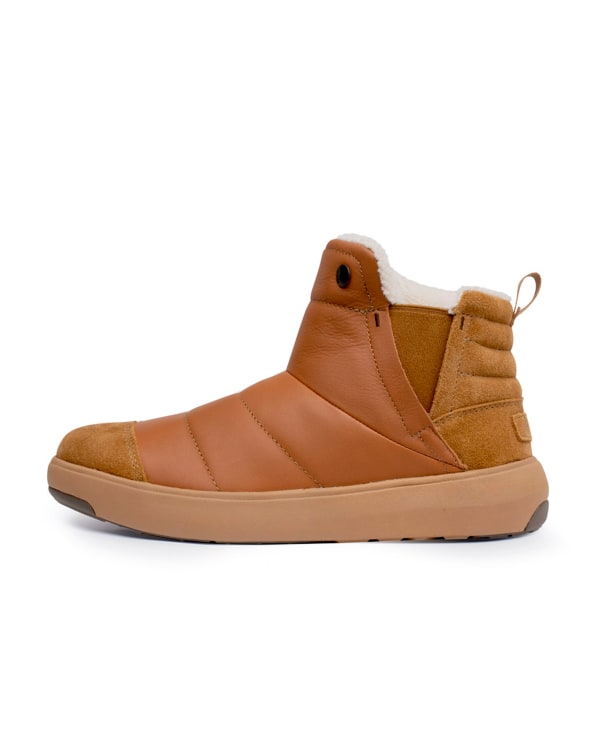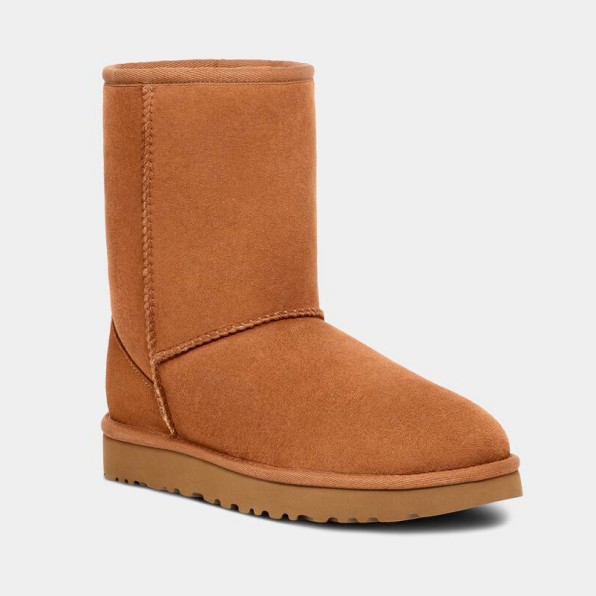[ad_1]
After a decade in business, Stio, the Jackson Hole-based outdoor gear brand, decided to create its very first pair of shoes. Instead of creating a hiking or snow boot, it hired top shoe designer Kurtis Sakai to create a cozy pair of leather booties lined with wool and equipped with soles that have good traction. “We wanted you to be able to wear it all day, anywhere,” says Stephen Sullivan, Stio’s founder and CEO. “But the soft interior was a non-negotiable. It provides warmth and comfort.”

Stio’s new “Colter Boot” captures the footwear zeitgeist of the moment. Right now, most of us are wearing some version of a fuzzy bunny slipper around the clock, in our new hybrid life that takes us in and out of the home. After years of pandemic living, our delicate feet are loathe to give up the soft embrace of cloud-like wool and shearling.

Our love of exceedingly soft shoes began long before COVID-19 hit our shores, but the lockdown appears to have deepened our attachment to comfy shoes, spurring brands of all kinds, even those that typically make high heels and dressy shoes, to introduce shearling-lined, plush styles. According to industry experts, it’s possible this will move beyond a trend, permanently altering shoe design for decades to come.

The soft-shoe gateway drug
In 1978, Australian surfer Brian Smith designed the UGG boot, made entirely from sheepskin, featuring an interior that engulfed your foot in puff of comfort. UGGs became an “it” shoe in the 2000s, and it has been a major driver of the growth of Decker’s, which acquired the brand in 2004. “Gen Z is obsessed with Y2K fashion,” says Shannon Adducci, a shoe analyst at the industry journal Footwear News. “They’ve helped propel the UGG back into relevance.”

But the most recent accelerant of the soft shoe trend is Allbirds, which launched in 2016. Cofounder Tim Brown wanted to create a more sustainable shoe that would keep plastic out of landfills. He believed wool might be potential material because it has moisture-wicking, temperature-regulating, and breathable properties, and is abundant in his native New Zealand. “When we first discovered the magic of merino wool, we were shocked the footwear world wasn’t widely taking advantage of it,” he tells me, pointing out that the brand sources merino wool that requires 60% less energy to produce that synthetic materials. “It’s really on the merit of that material that we were propelled into public consciousness.”

It wasn’t easy to make a sneaker out of wool. Brown says that there were many design challenges, from strengthening the tongue to reduce curling to reinforcing the toe lining to avoid tears. But after two years of R&D, the brand nailed the formula and launched its first pair of shoes in 2016, the Wool Runner, which it has continued to improve. Allbirds spawned many copycats, including from Amazon and Steve Madden. Everybody, it seemed, wanted to get in on the soft shoe boom. “You know what they say,” says Brown. “Imitation is the sincerest form of flattery!”
‘Shoes were like a security blanket’
Then the pandemic hit. People around the world spent years mostly indoors, wearing house slippers and sweatpants. Adducci says that she noticed a spike in consumer demand toward cozy footwear, and brands began to pivot their designs to softer shoes. “There was this childlike desire for comfort,” she says. “Our shoes were almost like a security blanket or a fuzzy toy. Sales of slippers and house shoes soared.”
In the darkest moments of the pandemic, when we did eventually deign to leave the house to get groceries or some air, Adducci says we gravitated toward shoes that felt like those slippers, but could be worn outside. Fortunately, there were many of those on the market. Allbirds and UGGs were obvious go-to’s. If you wanted more luxurious options, Gucci’s Princetown slipper, trimmed with lamb’s wool was popular, or you could opt for Jenni Kanye’s shearling mules or clogs.
For many people, the go-to COVID-19 shoe was the Birkenstock. In the years before the pandemic, the German shoe brand was already having a resurgence and becoming more fashionable thanks to collaborations with Rick Owens, Valentino, and Dior. But starting in 2020, Birkenstock’s popularity spiked, with searches going up by 225% and many retailers selling out.

Birkenstocks are already known for their comfortable footbed. The brand points out that softness is not the only key to comfort. Having a firm, high arch on the footbed actually takes pressure off the foot. “Consumers often associate softness with comfort, which is actually not the case from an orthopedic point of view,” says a Birkenstock spokesperson. “Our firm contoured cork footbed provides comfort and support that molds to your foot and creates a custom fit over time.”
But as consumers yearned for softness, the brand released shoes that layered shearling onto the footbed starting in 2014, including the Boston clog and the Arizona sandal. During the pandemic, these styles exploded. “In a time of uncertainty and general worry, we saw the way that people found Birkenstock to be a source of certainty and comfort,” she says. “Shearling creates warmth and breathability. It’s a perfect pairing of comfort and support when shearling, that provides natural insulating properties together with the firm stability of our contoured cork footbed.”

The post-pandemic shoe
From the time shoes were first invented, around 8000 B.C.E., their design has been influenced by historical forces. Sometimes, advances came when innovators discovered materials that could be turned into shoes, like reed, hemp, and leather. Other times, cultural change prompted shoe innovation. Heels were invented during times of social inequality to signal wealth, because they implied the wearer didn’t have to do hard labor.
It’s possible that we’re currently in a moment of footwear change, when both material innovation and cultural shifts are dovetailing. Fashion, as a whole, has become increasingly casual over the decades, and experts believe that the pandemic deepened this trend. It makes sense, then, that footwear is also becoming more casual. The wool-lined shoe is perhaps the equivalent of sweatpants: Both of which are now acceptable to wear everywhere from the office to fancy dinners.

In a sign of how drastically comfort is dominating shoe design, even brands that aren’t part of the “comfort shoe” category are now jumping on the bandwagon. Loeffler Randall, for instance, launched in 2005 as a brand focused on making elevated shoes like fabulous strappy sandals and leather knee-high boots that were more comfortable than similar shoes on the market. Some of the brand’s bestsellers every year are the low-heeled Gia boot and even the Rivka platform heel. “It looks toweringly high but the heel and the platform cancels out the height, so its like walking around on something lower,” says Jessie Randall, cofounder and creative director. “Back when we launched, it was unheard of to have a dressy shoe that was also comfortable.”

Loeffler Randall has a pair of shearling-lined boots, of course. But it’s also found that in a post-pandemic world, some segment of the population is eager to dress up again. Indeed, the Randall says that the brand had the best year in its history last year. But after years of wrapping their feet in cozy comfort, consumers aren’t willing to compromise on comfort. “It’s hard to tell someone who has been wearing slippers for three years to squeeze their toes into a super pointy stiletto,” Randall says. “Blending style with comfort has always been important to me as a designer, but now, you just can’t get it wrong.”
While the shoe industry is indisputably shifting toward comfort, that doesn’t mean we’ll always been walking about in glorified house slippers, Adducci says. Eventually, she believes we will give up our obsession with softness—but we’ll also expect more comfort from our everyday boots, dress shoes, and heels. “The thing I can count on is that trends will always go in and out,” she says. “There’s something in our psyche that drives us to want something new. But I think we’ve learned some lessons about what it takes to design a comfortable shoe, because it’s something that all consumers want.”
[ad_2]
Source link

